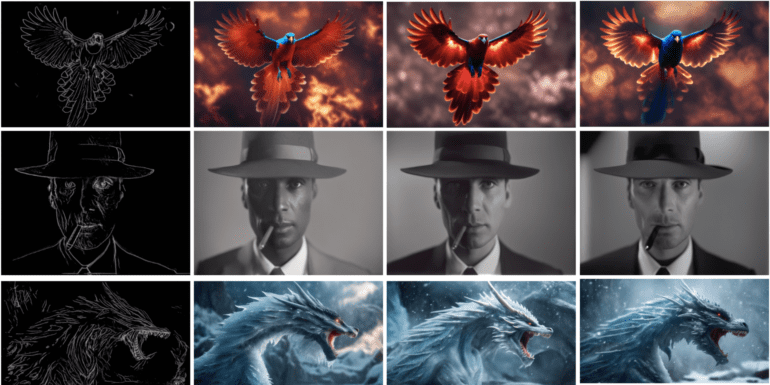TL;DR:
- T2I-Adapters offer an efficient alternative to ControlNets for text-to-image models.
- They align internal knowledge with external cues for precise image editing.
- T2I-Adapters require minimal retraining and do not burden computational resources.
- T2I-Adapter-SDXL significantly reduces model parameters and storage requirements.
- Collaborative efforts have integrated T2I-Adapters into the Stable Diffusion XL (SDXL) framework.
- Training T2I-Adapter-SDXL involved 3 million high-resolution image-text pairs from LAION-Aesthetics V2.
- Integration into the Diffusers framework is straightforward, allowing users to customize image generation.
- T2I-Adapters enable control over conditioning factors like “adapter_conditioning_scale” and “adapter_conditioning_factor.”
Main AI News:
T2I-Adapters, the latest in plug-and-play innovations, are poised to revolutionize text-to-image models. Offering a more efficient approach than counterparts like ControlNet, these tools harmonize internal knowledge with external cues, enabling precise image editing without the need for extensive retraining. The key distinction lies in their operational efficiency. Unlike ControlNet, notorious for its hefty computational demands and sluggish image generation, T2I-Adapters are executed just once during the denoising process, ushering in a quicker and more resource-friendly solution.
The tangible advantages of T2I-Adapter-SDXL become apparent when examining model parameters and storage requirements. For instance, ControlNet-SDXL touts a formidable 1251 million parameters and a space-hungry 2.5 GB in fp16 format. In stark contrast, T2I-Adapter-SDXL significantly streamlines both parameters (79 million) and storage (158 MB), marking a staggering reduction of 93.69% and 94%, respectively.
A collaborative endeavor between the esteemed Diffusers team and T2I-Adapter researchers has yielded support for T2I-Adapters within the Stable Diffusion XL (SDXL) framework. This partnership focuses on training T2I-Adapters on SDXL from the ground up, producing promising results across an array of conditioning factors, including sketch, canny, line art, depth, and openpose.
Training T2I-Adapter-SDXL entailed the utilization of 3 million high-resolution image-text pairs from LAION-Aesthetics V2. The training regimen was tailored with precision, specifying settings such as 20000-35000 steps, a batch size of 128 (data parallel with a single GPU batch size of 16), a consistent learning rate of 1e-5, and mixed precision (fp16). These configurations strike an equilibrium between speed, memory efficiency, and image quality, rendering them accessible for broader community usage.
The integration of T2I-Adapter-SDXL into the Diffusers framework is streamlined via a series of straightforward steps. Users are first required to install essential dependencies, encompassing diffusers, controlnet_aux, transformers, and accelerate packages. Subsequently, the image generation process with T2I-Adapter-SDXL unfolds through two primary phases: preparing condition images in the requisite control format and channeling these images and prompts into the StableDiffusionXLAdapterPipeline.
In a practical application, the Lineart Adapter takes center stage, conducting lineart detection on an input image. This paves the way for image generation, enabling users to exert control over the conditioning extent through parameters like “adapter_conditioning_scale” and “adapter_conditioning_factor.”
Conclusion:
T2I-Adapters represent a game-changer in the world of image generation. Their efficiency, reduced resource demands, and seamless integration into existing frameworks make them a valuable tool for AI innovation. This innovation is poised to drive creativity and customization in the market, offering businesses new avenues for image-related applications and solutions.

